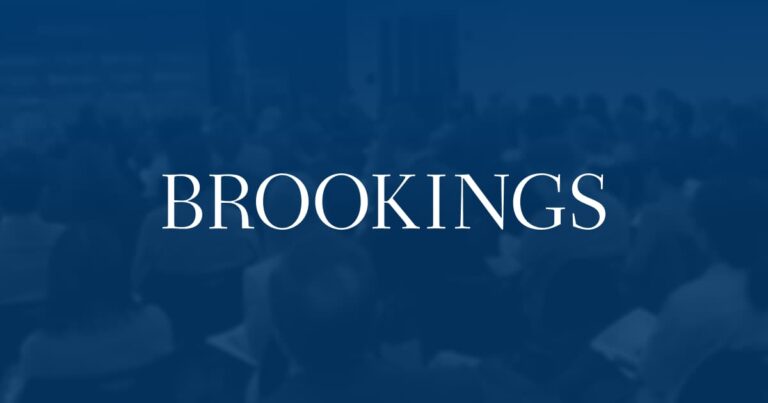Since 2016, when three Midwestern states (Michigan, Pennsylvania and Wisconsin) proved decisive in President Donald Trump's narrow electoral college victory, we here in the Midwest – along with many outside observers – have continued to sift through the political-economic tea leaves for signs of what motivates Midwestern voters.
Of particular interest is the extent to which these voters—especially those in communities facing long-term economic challenges—engaged in a kind of “anti-establishment” backlash in favor of candidate Trump, an issue I first explored in the wake of the 2016 election. In this regard, last fall's midterm elections, as well as statewide races in the Midwest, provide some evidence that a vibrant and growing local economy is a possible antidote to political appeals based on economic nostalgia and nativism. while continued economic decline may continue to stimulate reactions in the other direction.
In November 2018, 15 congressional districts in the Upper Midwest states flipped from Republican red to Democratic blue. These were mostly suburban and exurban counties within the orbit of major metro areas such as Minneapolis, Chicago, and Pittsburgh. Less noticed were three Upper Midwest districts that flipped, from blue to red—Minnesota's 8th district in the northern Iron Range. Its 1st district in the south, bordering Iowa. and the 14th district of Pennsylvania comprising counties in the southwest corner of that state.
In areas that swung Democratic, the party was helped by a large turnout of its base in African-American and progressive communities, as well as among young voters, women and independents who wanted to vote “anti-Trump.” But as the color coding in Table 1 suggests, in the 12 congressional districts that swung Democratic, people also did better. In all congressional districts that recently turned blue (except one in Iowa and two in Pennsylvania where redistricting contributed significantly to party switching), residents had incomes higher than state averages, as well as higher levels of education— in most places by significant margins. In contrast, in the three districts that went from blue to red, incomes and educational attainment tended to lag the statewide rates.

At the state level in November, voters in Michigan and Wisconsin replaced Republican governors with Democrats, while those in Pennsylvania re-elected a Democratic governor. Beyond increased turnout, these gubernatorial victories also appear to have been fueled by a shifting and economically advantaged electorate in historically conservative parts of those states.
Michigan provides a particularly notable example of this dynamic. Governor Gretchen Whitmer built her victory on the traditional Detroit and working-class vote in eastern Michigan. He scored new victories for a Democrat in Kent County (home of Grand Rapids, Michigan's second city), eight other counties won by Donald Trump in 2016 and near victories in other historic conservative strongholds that have seen population growth and change. As the the Oakland Press reported:
For years, even losing Republican candidates for statewide office did well in Kent County, which includes the Democratic stronghold of Grand Rapids but is surrounded by largely Republican-friendly turf. Whitmer is the first Democratic gubernatorial candidate to carry the county since incumbent James Blanchard in 1986. He narrowly defeated Republican Bill Schuette in historically Republican Grand Traverse County, home to Traverse City. And he won in the state's most conservative county, Ottawa, which includes the Lake Michigan coastal communities. Perhaps not coincidentally, all three counties are among the fastest growing counties in Michigan….
These voting patterns suggest that new economic vitality and changing demographics work hand in hand: Support for minorities and a different politics naturally builds as the economy changes and more people feel optimistic about the future for themselves, their families them and their communities. The fact that the governors-elect are relatively moderate Democrats, who did not run “anti-Trump” campaigns but spoke directly on health, education and infrastructure issues (Whitmer's campaign slogan was “Fix the Cursed Roads”), may prompt those who suggest a lunch pail strategy for the “talk in the middle” party.
Of course, the economic development in many of the small and medium-sized industrial cities of the Midwest – which can also be seen as economic and political priority — it won't happen overnight. But until then, experts suggest, the winning political path for Democrats in key Midwest states appears to be one of both. As a political observer Rui Teixeira observed in the Washington Post: “Have white college graduates, strongly mobilize non-white voters, especially blacks, and maintain deficits among non-college-educated white voters in the 10- to 15-point range. Unlike Hillary Clinton in 2016… Democrats in Pennsylvania, Michigan, Wisconsin and Minnesota took all three parts of the formula in the midterms.
As both parties approach the Midwest in 2020, November's results suggest that candidates equipped to discuss new economic opportunities will be better positioned to capture attention and votes in the many fast-growing parts of this vast region. .
Jack Farrell of the University of Michigan contributed to this post.

